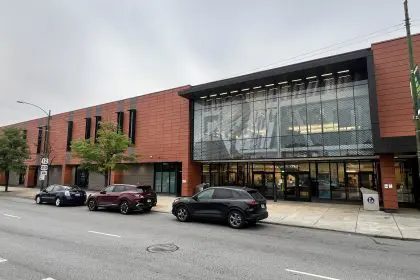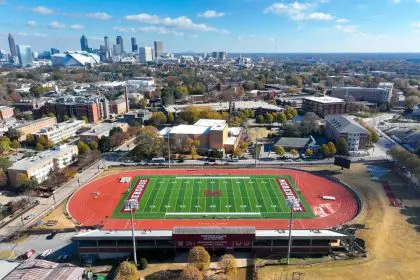On a meaningful Sunday in December 2024, New Orleans marked a pivotal moment in preserving its African American heritage. The unveiling of a historic marker beneath the Claiborne overpass commemorates a once-thriving Black business district that served as the heartbeat of the community from the 1830s through the 1970s. This recognition comes after decades of advocacy from community leaders and historians determined to preserve this crucial chapter of New Orleans history.
The golden age of Claiborne Avenue
Before Interstate 10 transformed the landscape, Claiborne Avenue represented the pinnacle of Black entrepreneurship in the South. During its peak in the 1950s and 1960s, over 200 Black-owned businesses operated along this historic corridor. Local records show these enterprises generated millions in annual revenue, creating a self-sustaining economic ecosystem that provided jobs and opportunities for thousands of residents.
A thriving world beneath the oaks
The district’s iconic oak trees, some over 100 years old, created a natural canopy that sheltered generations of entrepreneurs and their customers. Businesses ranged from the famous Stern’s Pharmacy, which operated for over 60 years, to the Astoria Hotel, where legendary musicians often stayed while performing in the city. The Monte’s Restaurant served as a gathering spot for civil rights leaders, while the Tick Tock Tavern hosted jazz performances that helped shape the city’s musical heritage.
The faces behind the initiative
The Plessy and Ferguson Foundation, founded by descendants of the historic Supreme Court case that legalized segregation, spearheaded this meaningful project. Keith Plessy, whose ancestor Homer Plessy challenged segregation laws in 1892, worked alongside Phoebe Ferguson, whose great-great-grandfather presided over that landmark case. Their collaboration symbolizes healing and progress, turning a painful historical connection into a force for positive change.
Economic powerhouse of its era
Historical records paint a picture of remarkable economic success. By 1960, Claiborne Avenue businesses collectively employed over 15,000 people and served as the primary shopping destination for Black residents across Louisiana. The district’s pharmacies, insurance companies, and banks provided essential services otherwise denied to Black citizens due to segregation laws.
The devastating impact of urban renewal
The construction of Interstate 10 in the late 1960s marked the beginning of a tragic transformation. More than 300 oak trees were destroyed, and countless businesses were displaced. Records show that property values in the area declined by 60% within five years of the highway’s construction. Former business owners recall receiving minimal compensation for their properties, with some forced to relocate without any assistance.
Voices from the past and present
Local historian Marie Thompson, whose grandmother owned a dress shop on Claiborne, shares stories passed down through generations. “My grandmother’s shop dressed three generations of Black women for every important occasion in their lives,” she recalls. “When the highway came, she lost not just her business, but her connection to the community she’d served for 40 years.”
Similar stories across America
New Orleans’ experience mirrors that of other Black business districts across the country. Like Tulsa’s Black Wall Street and Durham’s Parish Street, Claiborne Avenue fell victim to urban renewal projects that disproportionately impacted Black communities. However, unlike some districts that were completely destroyed, portions of Claiborne’s community managed to survive beneath the elevated highway.
The marker’s deeper significance
Beyond commemorating history, the new marker serves as a teaching tool for future generations. Local schools now incorporate the district’s history into their curriculum, helping students understand both the achievements of Black entrepreneurs and the impact of discriminatory urban planning policies.
Modern-day renaissance
Today’s Black business owners along Claiborne draw inspiration from their predecessors. New enterprises, from tech startups to artisanal food companies, are establishing themselves in the area. The marker has sparked renewed interest in supporting these businesses, with local organizations offering grants and mentorship programs to nurture the next generation of entrepreneurs.
Preserving cultural traditions
The district’s spirit lives on through cultural traditions that refused to die. Weekly second line parades still pass beneath the highway, and community gatherings continue in the spaces where oak trees once stood. Local artists have transformed the highway’s support columns into vibrant murals celebrating the area’s history.
Looking toward the future
Plans are underway to further revitalize the district while honoring its past. The city has allocated funds for streetscape improvements, and community groups are working to establish a museum celebrating Black entrepreneurship. Some activists advocate for removing portions of the highway to restore the avenue’s former glory.
The ongoing mission
The historic marker represents just the beginning of a larger effort to reclaim and celebrate Black economic history in New Orleans. Community leaders continue pushing for additional recognition, including designation as a national historic district and the creation of a permanent cultural center.
As New Orleans continues to evolve, the Claiborne Avenue historic marker stands as a powerful reminder of what was lost and what could be again. It tells a story of resilience, entrepreneurship, and community spirit that refuses to be forgotten, inspiring new generations to build upon the legacy of those who came before.
Tags: new orleans history, black business district, claiborne avenue, african american heritage, urban development, community history, black entrepreneurs, cultural preservation, civil rights history, louisiana heritage.
















